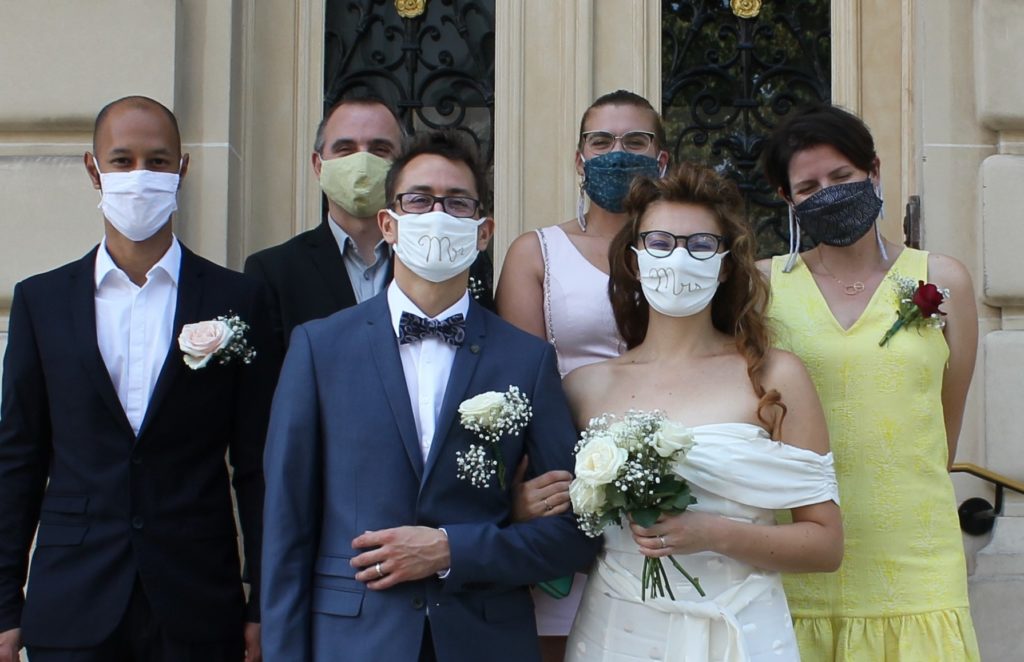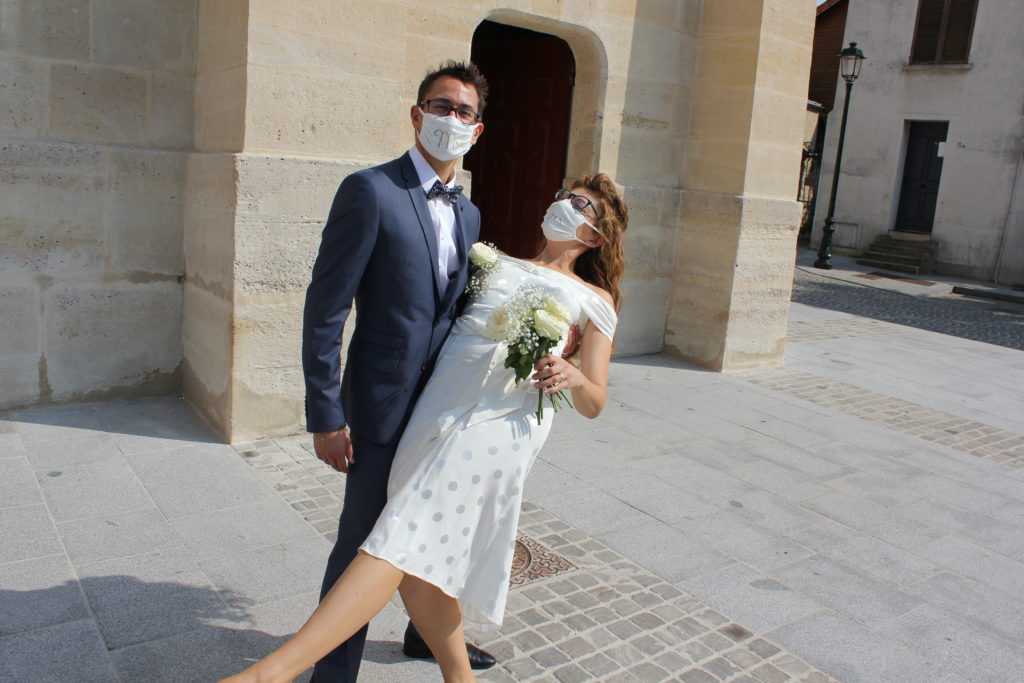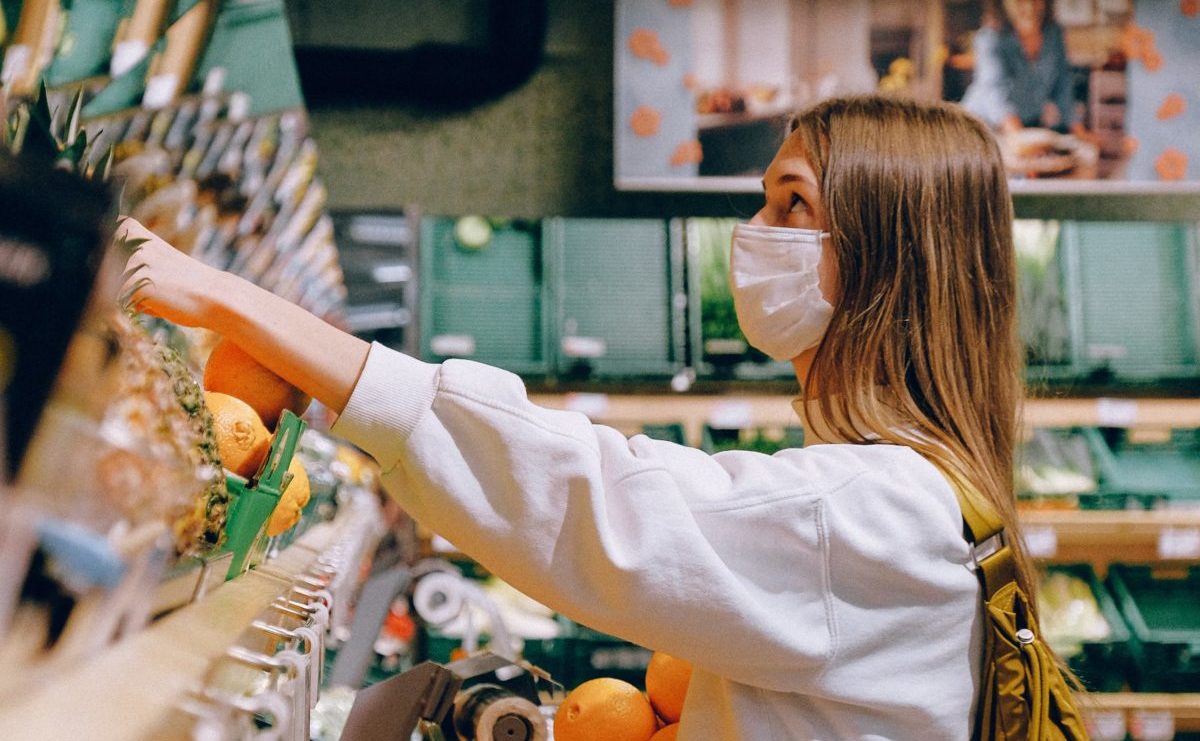Living in Brno (through a facemask)

Facemasks are everywhere. Two French expats — Amédée Vigier and Stephanie Zouhar — were married in Paris prior to moving to the Czech Republic this week. Their facemasks, which say “Mr.” and “Mrs.”, will forever be part of their wedding, their relocation and their memories of 2020
In August, my wife and I had tickets to the National Theatre of Brno premier of Radio and Juliet, a ballet that melds the music of Radiohead and the timeless Shakespearean story. We were all dressed up and excited about having a night out (read: a few precious hours away from the toddlers).
I was wearing a dark blue suit, mostly polished dress shoes and a blue tie. I had showered and shaved. I even had a recent haircut.
Unfortunately, we were running late. Dealing with the babysitting aunts took some time. Parking took more time. And, because I am constitutionally unable to remember which is Mahen Theatre and which is Janáček Theatre, we had to take a several-block run to get to the correct venue — Mahen Theatre. (Somebody please give me a mnemonic device!) We burst into the lobby a few minutes before curtain and we were immediately stopped: “Please, put on your facemask.”
Even though the coronavirus pandemic restrictions had been eased during the summer, the theatres, with their penchant for drawing an elderly crowd, still required facemasks. So, on a hot and muggy evening, still breathing from our sprint down Rooseveltova Street, I pulled a facemask out of my jacket pocket.
And I recoiled at the sight.
My facemask had a ridiculous pattern. I paused for a moment, considering the absurdity of wearing it with my suit. Alas, I was stuck, with no other options.
I decided, what the heck, embrace the farce. So, I put the facemask on, stuck out my arm and escorted my glamorously-dressed wife (who wore a clothing-appropriate facemask) up the red-carpeted stairs and into the theatre, all while wearing a repeating pattern of evergreen-tree species — brown triangular spruce trees, green pine-needled trees and gray and brown (apparently dying) trees — stretched across the bottom half of my face.
I believe that the facemasks save lives and I hesitate to be critical of their use in any way. They are the symbols of our times during this year of the coronavirus — and they can be terribly silly.
At least, upon escorting my wife into the 138-year old theatre, no one could see my big grin as I reveled in the delicious social inappropriateness of wearing animated trees on my face to a fancy cultural event.
Earlier this year, I did not feel the true reality of the COVID-19 pandemic when I read the everyday statistics in online newspapers. Neither did I fully appreciate the situation when we entered into quarantine in mid-March.
I took each of these markers in stride, with the general belief that the Malthusian curve — which shows that our global population growth is outpacing the availability of resources — has always made logical sense to me, and perhaps, this was a sign of the bill coming due. Facemasks, at least, offered some level of protection, even if only symbolic.
The hard punch to the gut was when we received a package of homemade facemasks — roušky in Czech — that included kid-sized versions with fun animated images (and my evergreen-tree mask). Yes, my kids look cute in them, but the underlying reason for having them became terrifyingly clear.
Wearing facemasks in public became required in the Czech Republic on March 18. Crafty grandmothers started to sew them and, quickly, a cottage industry sprang up. In fact, this country was an international forerunner in the use of facemasks, with a group — masks4all.org — that worked to educate the world through social media and professional videos. By the beginning of April, facemasks were being sold in rouškomaty vending machines throughout Brno.
Now, facemasks are back because the coronavirus has returned. It is unclear as to what will happen in the coming weeks and months. At the beginning of October, facemasks are required on public transportation, in schools, in stores and, yes, in theatres as the Janáček Brno 2020 festival honors our city’s famous musical son for the next three weeks.
This new phase has led to more creativity. Wedding couples write “Mr.” and “Mrs.” on their facemasks. Fans sport their favorite team’s logo. Political messages are now being added.
In any case, I have not learned my lesson. After my grand entrance into the ballet, I recently found myself in front of classrooms of students with that same evergreen-tree mask. Now everyone thinks I like trees. It’s true, I do like trees and forests and hiking and being in the mountains —but I didn’t realize that I would become a walking advertisement for them.
 Two weeks ago my cousin, Stephanie Zouhar, married Amédée Vigier in Paris prior to moving to the Czech Republic to pursue a Ph.D. The facemask restrictions in France are strict. People must wear them everywhere in public. And, unlike in the Czech Republic, even the bride and groom of a small civil-ceremony wedding should wear them. (Don’t tell anyone: the civil servant who married my cousin, a neighbor, allowed for the “oui”, the kiss and some photos to be without masks.)
Two weeks ago my cousin, Stephanie Zouhar, married Amédée Vigier in Paris prior to moving to the Czech Republic to pursue a Ph.D. The facemask restrictions in France are strict. People must wear them everywhere in public. And, unlike in the Czech Republic, even the bride and groom of a small civil-ceremony wedding should wear them. (Don’t tell anyone: the civil servant who married my cousin, a neighbor, allowed for the “oui”, the kiss and some photos to be without masks.)
Some might be disappointed by such a blemish on important photographs. But, if you look hard enough, there is always a bright side.
The wedding photos — like all of our own personal facemask photos from this year — serve as powerful images that will, decades in the future, immediately connect to this extraordinary era.
And there will be no need to search for the year when the photos were taken.
Photos: personal archive of Amédée Vigier and Stephanie Zouhar

